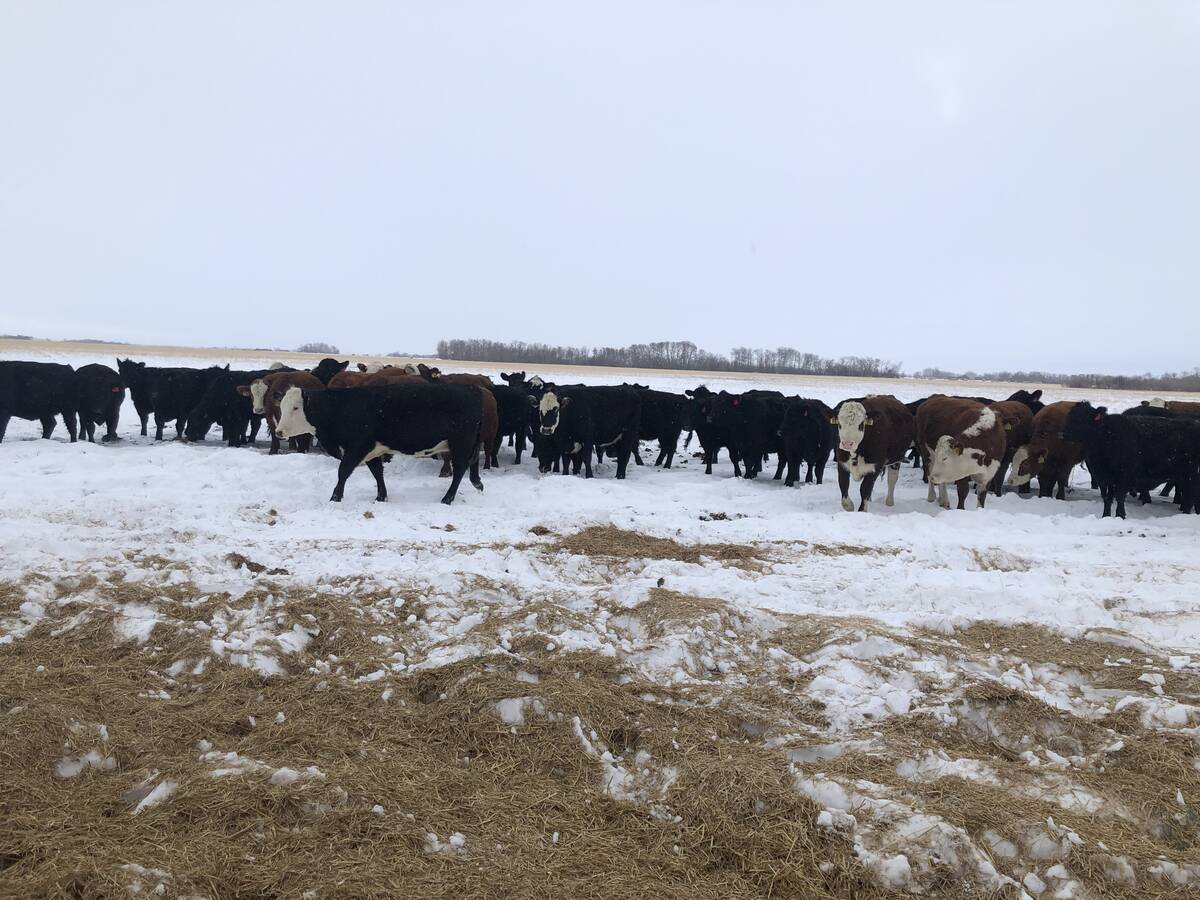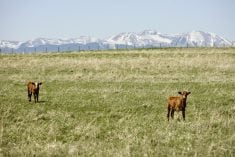Lower-than-normal seasonal rainfall this spring and summer has led to severe drought conditions throughout much of Alberta and Saskatchewan resulting in poor growth of annual cereals, crops for hay and pasture. This will have obvious implications on the nutrition and management of the cow-calf herd during the grazing season and into the winter as preserved forages are fed. In cases with limited forage availability, producers may want to apply feeding strategies that reduce forage consumption.
Nutritional concerns
During drought conditions there are many potential nutritional issues to be aware of, the first being water quality. Poor water quality is known to reduce performance of cows and calves. The concentration of total dissolved solids, sulphur and nitrates are indicators for water quality and commonly increase in well and surface water during drought conditions. At high concentrations, these compounds can reduce water intake and cause health problems and even death. Hot temperatures also facilitate the growth of blue-green algae in water sources during the summer months, which can cause sudden death. Increased water requirements during high temperatures must also be considered, and adequate quality and quantity of water should be provided at all times. Testing your water could be a prudent management decision, especially in a drought year.
Read Also

Picking the most efficient cows to rebuild your cow herd
A new cow ranking system to help beef farmers and ranchers pick the most efficient cows as they rebuild their herds.
Low quantity of forage available during grazing may put cattle at higher risk of ingesting toxic plants during drought conditions, many of which cause neurologic disorders or sudden death. Plants that accumulate toxic compounds due to soil conditions can also be a problem in drought years. Selenium and sulphur are most commonly accumulated in plants leading to toxicities.
Drought-stressed plants are also prone to accumulate nitrates, which if not given time to dissipate prior to harvest, can lead to nitrate toxicity when ingested by cattle. Nitrate accumulation is most common in annuals such as oat, barley, and wheat and is most apparent during early development (milk to dough stages). This must be considered when harvesting greenfeed or when grazing these crops.
Strategies to extend the forage supply
Early weaning and creep feeding calves. When forage supplies are low, producers could consider weaning earlier than normal for their operation. Weaning will allow the cow to dry off thereby reducing the total energy required by each cow to support milk production. Weaning should only be imposed when calves are eating a sufficient amount of dry matter. Creep feeding may also be beneficial as calves can receive additional energy, protein, minerals, and vitamins to support growth and development and creep feeding is an effective tool to aid in early weaning of beef calves.
Supplementation on pasture. Supplementation is recommended for cattle on pasture during drought conditions as a way to prolong pasture availability and compensate for poor pasture quality. Providing a highly digestible energy source such as cereal grains or grain screenings will provide energy to the cattle. This will allow for more efficient capture of nutrients from the diet while decreasing forage intake. Past research has shown that feeding at least three pounds of barley per cow per day results in a marked reduction in forage consumption. The viability of using cereal grains to supplement pasture will depend largely on commodity pricing and availability, coupled with the logistics of supplementing daily on pasture. Despite the challenges, this approach could be considered as a way to sustain pastures this season. It should be noted that cereal grains should be provided daily as infrequent supplementation can increase risk for rumen acidosis. The use of protein sources as a supplement will not have the same effect on forage intake as protein supplementation may, in some cases, increase forage consumption.
Use of adequate salt and mineral should be supplied to cattle on range to prevent deficiencies due to poor-quality pasture, and to reduce the likelihood of animals seeking potentially toxic salt sources such as lead batteries.
Considerations for winter feeding
Moving into the fall and winter months, producers and their veterinarians should be aware of potential vitamin A and E deficiencies arising after a prolonged period on poor-quality forages. Use of straw in diets may increase the need for mineral and vitamin supplementation. Stockpiled forages, hay, greenfeed, or straw bales from previous years and cereal grains should all be tested so that diets fed to cattle meet nutrient requirements. Drought conditions and prolonged dry feed storage affect both the nutrient quality and concentration of potential toxins in the final feed product. Results should be taken into account when developing nutritional programs for winter feeding of the cow herd.
The authors are with the department of large animal clinical sciences, University of Saskatchewan and the department of animal and poultry science at the University of Saskatchewan.
















